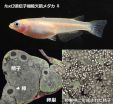(Press-News.org) Investigators from Massachusetts General Hospital (MGH) and the Ragon Institute of MGH, MIT and Harvard have added another piece to the puzzle of how a small group of individuals known as elite controllers are able to control HIV infection without drug treatment. In their paper published in the open-access journal PLOS Pathogens, the research team reports finding that dendritic cells of elite controllers are better able to detect the presence of HIV - paradoxically through a greater susceptibility to HIV infection - which enables them to stimulate the generation of T cells specifically targeting the virus.
"It's been recognized for a while that these individuals have stronger T-cell immune responses against HIV than other patients, but the reason for that has been unknown," says Xu Yu, MD, of the Ragon Institute and the MGH Department of Medicine, corresponding author of the paper. "We have shown that dendritic cells, which play a critical role in generating virus-specific T cells, have an improved ability to recognize HIV and build effective immune responses in elite controllers."
Part of the innate immune system that is the body's first line defense against infection, dendritic cells sense the presence of pathogens in the blood or other tissues, ingest infecting organisms and then display fragments of the invaders on their surface, which alerts and activates both killer and helper T cells (CD4 and CD8 cells), essentially teaching them to target the specific pathogen. Because of this critical role of dendritic cells, the investigators explored the hypothesis that dendritic cells of elite controllers were better able to sense HIV and as a result to generate virus-specific T-cell responses.
When HIV infects a cells it first injects its genetic material - RNA in this case - into the cell along with the reverse transcriptase enzyme that transcribes the single-strand RNA molecule into a double-stranded DNA molecule. After HIV DNA enters the nucleus of an infected cell, it becomes integrated into the cellular DNA, turning it into an HIV factory that generates more virus particles. In experiments using dendritic cells from elite controllers, from patients with progressing HIV infection, and cells from uninfected individuals, the investigators found a surprising difference. In most people, HIV infection of dendritic cells appears to be blocked at an early stage, resulting in a lack of HIV DNA and limited viral replication within those cells. While this may seem beneficial, it actually works more to the benefit of the virus than the infected individual by allowing HIV to escape recognition by dendritic cells.
The dendritic cells of elite controllers, however, were found to contain higher levels of HIV DNA, probably because of limited expression of a protein called SAMDH1 that usually blocks reverse transcription in several types of immune cells. The dendritic cells of elite controllers also appear to produce higher levels of a DNA-sensing protein called cGAS that recognizes the presence of HIV and induces rapid expression of type 1 interferons. This contributes to the generation of the more powerful T-cell responses against HIV that are typically observed in elite controllers.
"We are now focusing on fully understanding all the components required to trigger appropriate activation of dendritic cells in HIV infection, which may help to induce an elite-controller-like, drug-free remission of HIV in a broader patient population." explains Yu, an associate professor of Medicine at Harvard Medical School.
INFORMATION:
Additional co-authors of the study are lead author Enrique Martin-Gayo, PhD, Maria Jose Buzon, PhD, Zhengyu Ouyang, Ph.D, Bruce Walker, MD, and Mathias Lichterfeld, MD, MGH and Ragon Institute; and, Taylor Hickman, Jacqueline Cronin, and Dina Pimenova, Ragon Institute. Support for the study includes National Institutes of Health grants AI078799, AI089339, L121890, AI098484, HL126554, AI116228, AI087452, AI098487 and AI106468.
The Ragon Institute of MGH, MIT and Harvard was established in 2009 with a gift from the Philip T. and Susan M. Ragon Foundation, creating a collaborative scientific mission among these institutions to harness the immune system to combat and cure human diseases. The primary initial focus of the institute is to contribute to the development of an effective AIDS vaccine. The Ragon Institute draws scientists and engineers from diverse backgrounds and areas of expertise across the Harvard and MIT communities and throughout the world, in order to apply the full arsenal of scientific knowledge to understanding mechanisms of immune control and immune failure and to apply these advances to directly benefit patients.
The concept sounds like the stuff of science fiction: take a pill, and suddenly new tissues grow to replace damaged ones.
Researchers at Case Western Reserve and UT Southwestern Medical Center this week announced that they have taken significant steps toward turning this once-improbable idea into a vivid reality. In a study published in the June 12 edition of Science, they detail how a new drug repaired damage to the colon, liver and bone marrow in animal models -- even going so far as to save the lives of mice who otherwise would have died in a bone marrow transplantation ...
This news release is available in Japanese.
Researchers in Japan have found, for the first time in vertebrates, a genetic switch that determines whether germ cells become sperm or eggs. The gene is named foxl3, and has been identified using a small fish called medaka (Oryzias latipes). In medaka without this gene's functionality, surprisingly, sperm are produced in the ovaries of females. The sperm that are produced function normally, and have been confirmed to produce normal offspring. These results will be announced in the journal Science through Science Express ...
EDMONTON, Canada, June 11 -- In this summer's much anticipated blockbuster Jurassic World, actor Chris Pratt joins forces with a pack of swift and lethal velociraptors. 'Velociraptor belongs to a group of predatory dinosaurs called the deinonychosaurs, or simply the 'raptors',' says University of Alberta paleontologist Scott Persons. 'Raptors are characterized by particularly nasty feet. Their big toes each bore an enlarged and wickedly hooked talon, which makes raptors well suited for Hollywood fight scenes.'
Persons and University of Alberta alumnus Lida Xing are part ...
A NASA mission led by UCLA professor Christopher Russell has released new images of the dwarf planet Ceres, the largest asteroid between Mars and Jupiter.
The photos were produced by the spacecraft Dawn, which is now observing Ceres from 2,700 miles above its surface; NASA has also produced a one-minute video animation that sheds new light on this mysterious and heavily cratered world.
'Everything we learn from Ceres will be absolutely new,' said Christopher Russell, a UCLA professor of space physics and planetary science, and the Dawn mission's principal investigator. ...
Philadelphia, June 11 -- The Maillard reaction is a chemical reaction between amino acids and reducing sugars that results in browned foods like seared steaks and toasted bread. When proteins and sugars are mixed together and heated, new chemical compounds are formed. Some are responsible for new flavors and some, according to a new study published in the Journal of Dairy Science®, may protect us against cardiovascular disease.
Researchers at the R&D Center, Seoul Dairy Cooperative, the College of Life Science & Biotechnology, Korea University, and the BK21 Plus Graduate ...
People with autism are often described as "seeing the world differently." They tend to show superior perception for details, like, for example, the autistic artist Stephen Wiltshire's highly accurate representations of cityscapes drawn from memory. Now, researchers reporting in the Cell Press journal Current Biology on June 11 show that those differences in perceptual skill are present very early in infancy, before the onset of clinical symptoms of autism.
The researchers say that the findings may shift scientists' view of autism by suggesting that changes in perception ...
Sometimes it takes a long time to solve a puzzle: In 1893, German surgeon G. Reinbach discovered that tumor tissue is often infiltrated by special cells of the immune system called eosinophils. Ever since then, scientists have been trying to figure out if and how these cells, which are part of the innate immune system, are involved in cancer rejection.
"There are many studies that link the presence of eosinophils in a tumor with an improved prognosis of the disease. However, even 120 years after Reinbach's discovery, it still remained elusive whether or not eosinophils ...
ANN ARBOR--We've all been there: We eat an entire sleeve of fat-free, low-calorie cookies and we're stuffing ourselves with more food 15 minutes later.
One theory to explain this phenomenon is that artificial sweeteners don't contain the calories or energy that evolution has trained the brain to expect from sweet-tasting foods, so they don't fool the brain into satisfying hunger. However, until now, nobody understood how organisms distinguish between real sugar and artificial sweetener.
Now, a researcher at the University of Michigan has discovered how the brain of ...
Millimeter-wave (mmWave) wireless technology promises to support high-bandwidth content at speeds exceeding 10 gigabits per second--a thousand times today's current mobile phone download speeds--but with that promise comes public concern about the health risks associated with utilizing the high-frequency radio waves in that spectrum.
A multidisciplinary team of NYU researchers notes that unlike X-rays and gamma rays, which are called "ionizing radiation" and are known to cause genetic mutations due to their excessive energy levels, millimeter waves are "non-ionizing," ...
With age, postmenopausal women with osteoporosis are at greater risk of losing their teeth. But what treatment for tooth loss provides women with the highest degree of satisfaction in their work and social lives?
A new study by Case Western Reserve University School of Dental Medicine researchers suggests dental implants may be the best route to take, according to Leena Palomo, associate professor of periodontics and corresponding author of "Dental Implant Supported Restorations Improve the Quality of Life in Osteoporotic Women."
Their findings were reported in the ...

